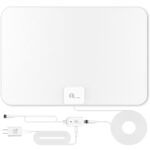Your lungs are vital organs that allow you to breathe, taking in life-giving oxygen and expelling waste carbon dioxide. Understanding where your lungs are located and how they function is fundamental to appreciating your respiratory system. This article will guide you through the location of your lungs within your body and explore the intricate network of airways that enable them to perform this essential task.
The Thoracic Cavity: Your Lungs’ Protective Home
So, Where Are Your Lungs situated? Your lungs are located in the chest cavity, also known as the thoracic cavity. This space is enclosed and protected by your rib cage, which is made up of 12 pairs of ribs that curve around your chest from your spine to the front of your body. The rib cage acts as a sturdy shield, safeguarding your delicate lungs from external impacts and injuries. Beneath the lungs, separating the chest cavity from the abdominal cavity, is the diaphragm, a large, dome-shaped muscle crucial for breathing.
The thoracic cavity is not just a simple empty space; it’s carefully designed to support and facilitate lung function. The space between the lungs, known as the mediastinum, houses other vital organs such as the heart, esophagus, trachea, and major blood vessels. This arrangement highlights the central and protected location of the lungs, essential for their continuous and uninterrupted operation.
Navigating the Airways: From Entry to Air Sacs
Air enters your body through your mouth and nose. These entry points are the beginning of the respiratory system, where air is initially filtered, moistened, and warmed as it passes through the nasal cavity and sinuses – interconnected air-filled spaces within the bones of your face. This conditioning process is important because breathing in cold, dry air can irritate the sensitive tissues of your lungs.
From the nasal cavity, air travels down through the larynx, also known as your voice box, which contains the vocal cords that allow you to speak. Following the larynx is the trachea, or windpipe, a tube reinforced with rings of cartilage to prevent it from collapsing. This cartilage support ensures that the airway remains open, allowing for unimpeded airflow to and from the lungs.
The trachea branches into two main bronchial tubes, or bronchi, one for each lung. These bronchi further divide into smaller and smaller tubes within the lungs, resembling the branches of a tree. These progressively smaller tubes are called bronchioles. This extensive branching network ensures that air is distributed throughout all regions of the lungs.
At the very end of the bronchioles are tiny air sacs called alveoli. These are the functional units of the lungs, and your lungs contain an astonishing number – around 150 million alveoli per lung.
Alveoli: Where Oxygen Enters Your Bloodstream
The alveoli are not just simple sacs; they are surrounded by a dense network of capillaries, tiny blood vessels that are part of the circulatory system. The walls of both the alveoli and capillaries are extremely thin, allowing for the efficient exchange of gases.
Blood that is low in oxygen and high in carbon dioxide is delivered to the capillaries surrounding the alveoli via the pulmonary artery. Through a process of diffusion, carbon dioxide moves from the blood into the alveoli to be exhaled, and simultaneously, oxygen from the inhaled air moves from the alveoli into the blood within the capillaries. This oxygen-rich blood then flows back to the heart through the pulmonary veins to be circulated throughout the body, providing oxygen to all your cells and tissues. The alveoli are coated with a substance called surfactant, which helps to reduce surface tension and allows them to expand and contract easily during breathing, preventing them from collapsing.
In conclusion, your lungs are strategically located within the protected thoracic cavity, working tirelessly to facilitate the essential exchange of oxygen and carbon dioxide. The intricate network of airways, from the nose and mouth down to the alveoli, ensures that every breath you take supports life. Understanding where your lungs are and how they function underscores their critical role in your overall health and well-being.

